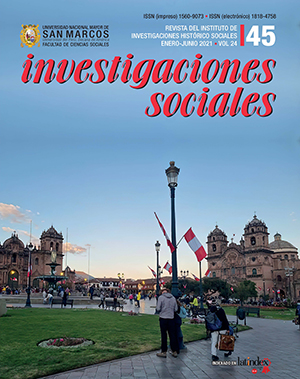Tourist preferences of older adults from Callao region
DOI:
https://doi.org/10.15381/is.n45.21385Keywords:
Demographic aging, elderly, tourist preferences, tourism and recreation, Callao regionAbstract
In Callao region a slow process of demographic aging is taking place, that is, older adults are constantly growing, reaching 12.4% of the total population of the region. Furthermore, life expectancy has increased to 78.4 years. Generally, the employment situation of this population is unemployed or retired. Therefore, they are at a stage in your life in which they have free time, which they could use for tourist trips or recreational activities, actions that would benefit their health and improve their quality of life. In the country, the elderly live in a situation of marginalization and neglect. Due to this, they should be incorporated into tourism public policies, which would lead to the elaboration of specialized tourist plans for this group, considering their tourist preferences, motivations, economic capacity, their state of health, among other aspects. It is unavoidable to consider incorporating the older adult population into tourism marketing, economically favoring tourism agencies, especially in low season and throughout the year. To know the tourist preferences of this population segment, a survey was applied to 384 people who make up the representative sample of the older adult population residing in Callao region.
Downloads
Published
Issue
Section
License
Copyright (c) 2021 María del Carmen More Altuna

This work is licensed under a Creative Commons Attribution 4.0 International License.
AUTHORS RETAIN THEIR RIGHTS:
a. Authors retain their trade mark rights and patent, and also on any process or procedure described in the article.
b. Authors retain their right to share, copy, distribute, perform and publicly communicate their article (eg, to place their article in an institutional repository or publish it in a book), with an acknowledgment of its initial publication in Investigaciones Sociales.
c. Authors retain theirs right to make a subsequent publication of their work, to use the article or any part thereof (eg a compilation of his papers, lecture notes, thesis, or a book), always indicating the source of publication (the originator of the work, journal, volume, number and date).






